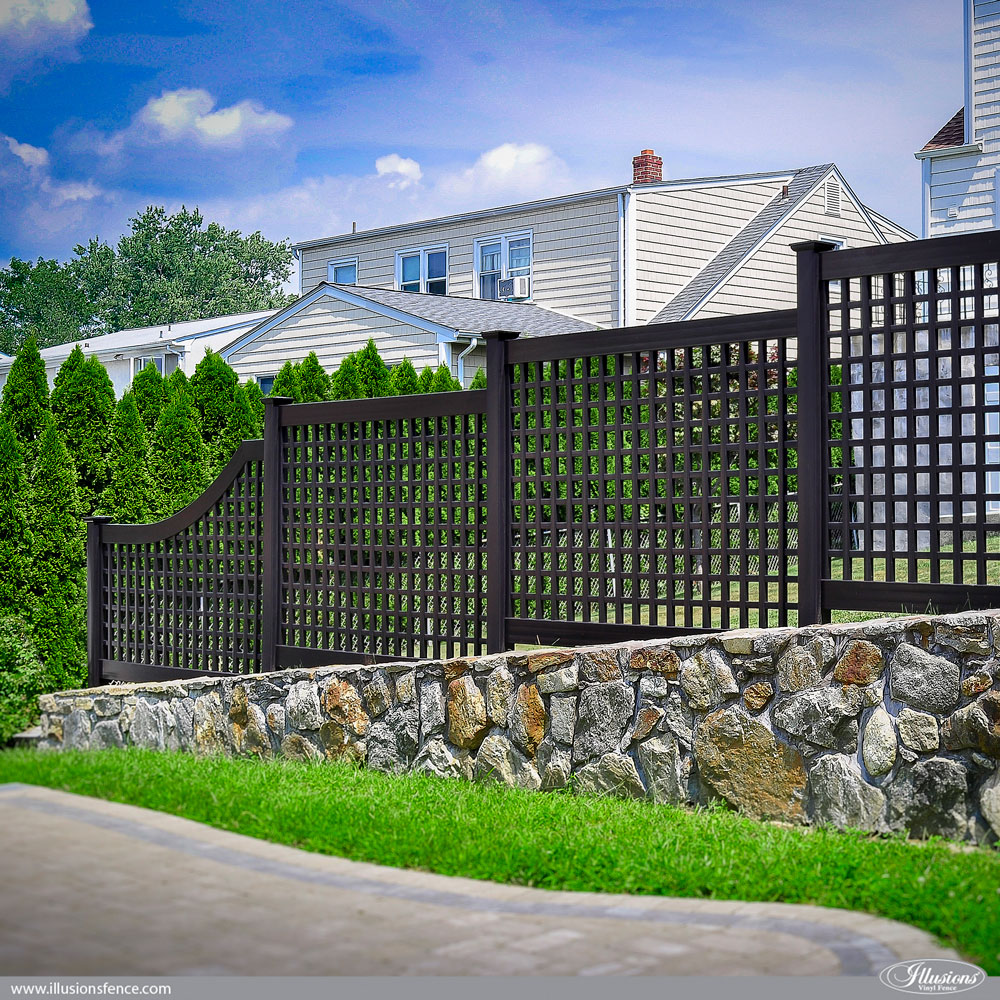

Vinyl lattice fencing is also more resistant to impact from accidental damage, which is a plus if you have pets or children that tend to run into things. Wood lattice fencing can last between up to fifteen years with proper maintenance, while vinyl can have around twenty-five to thirty years of service. The durability of your fence will ultimately depend on the material used and the conditions it’s exposed to. This makes bamboo lattice fencing a popular choice for homeowners who are looking for an environmentally-friendly fencing option. Bamboo is one of the fastest-growing plants on the planet and does not require the use of harmful chemicals or pesticides in its cultivation. Bamboo lattice fence is also low-maintenance, requiring only occasional cleaning and sealing to maintain its appearance and prolong its lifespan.Īnother advantage of this kind of lattice fence is that it is a sustainable and renewable resource. It can be easily cut and customized to fit any size or shape of the area.

One of the advantages of this fencing material is that it is lightweight and easy to install. It can be used for a variety of purposes such as enclosing a garden, creating privacy on a patio, or as a decorative accent for a backyard. The natural and elegant appearance can complement any outdoor space. It is made from sturdy and durable bamboo canes that are carefully woven together to create a lattice pattern.

Bamboo Latticeīamboo lattice fencing is a popular and eco-friendly alternative to traditional wood or metal fencing.
Long fence lattice install#
Another benefit is that it is easy to install and requires minimal maintenance, saving you time and money in the long run. Vinyl lattice also comes in many colors and styles, so you can customize the look of your fence to fit your taste. Rather, the decorative effect incorporates the open spaces against the top rails and uses a solid privacy fence for the bottom portion of the panel, thus allowing light into the enclosed space while keeping children and pets safe inside.
Long fence lattice full#
It’s also immune to pest infestations, so you don’t have to worry about replacing it anytime soon.Ī popular vinyl privacy fence doesn’t actually apply the lattice design to the full fence. Unlike wood, vinyl lattice fence doesn’t rot, warp, or fade in the sun. While it can be more expensive initially, it typically pays off in the long run. This is because it needs little maintenance and is relatively cost effective.

Vinyl fence has become one of the most increasingly popular fence materials over the years. However, with proper maintenance, wood can last up to fifteen years. Without proper maintenance like staining and sealing, wood lattice fence tends to rot or warp over time. Posts with ground contact should always be constructed from pressure treated wood. While wood can be less expensive than vinyl, its lifespan is shorter, particularly when exposed to harsh weather conditions. Lattice wood fencing is easy to work with, so you can customize the size and design of your lattice fence to fit any area you need. Cedar wood is also lightweight, easy to install, and can easily be stained or painted to match your home’s aesthetic. The most commonly used wood for lattice fencing is cedar as it is naturally resistant to decay and insect damage. Wood Lattice Fenceįor a classic and natural look, a wood fence is a popular choice. When thinking of lattice fence ideas you might wonder about metal lattice and this is when the lattice pattern of a chain link fence comes to mind. The pattern is consistent throughout the fencing industry and has been repeated in almost every material including metal. These fence panels include wood, vinyl and even bamboo. Most lattice fences are made from today’s most popular materials used to construct a lattice fence panel for your garden or property. What Materials Are Used for Lattice Fence? It’s no wonder why it has become a popular choice among homeowners looking to elevate their home’s curb appeal.


 0 kommentar(er)
0 kommentar(er)
